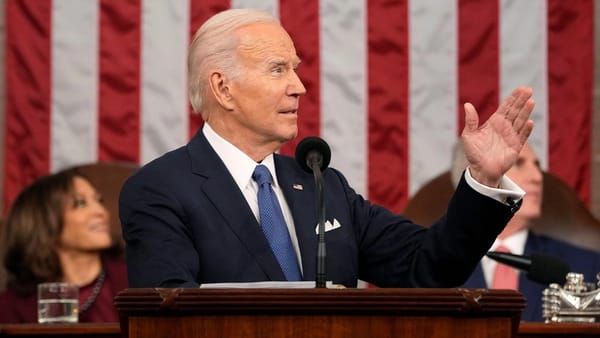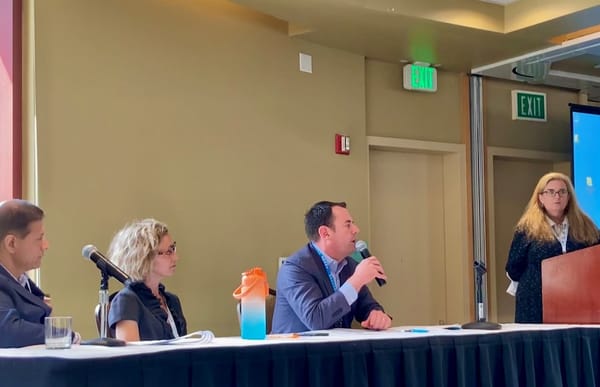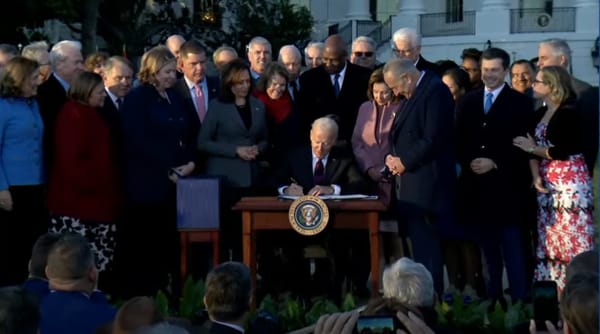
Expert Opinion
Samantha Schartman and Angela Siefer: A Call to the Research Community
As federal digital equity programs wind down, researchers are needed to help build sustainable models that keep communities connected.

Expert Opinion
As federal digital equity programs wind down, researchers are needed to help build sustainable models that keep communities connected.

Expert Opinion
For $849 million, Americans should expect modern data analytics, cost analysis, and competitive auctions to deploy billions of dollars of funding.

Infrastructure
Support from the Broadband Equity, Access and Deployment last mile program may cover middle mile gaps.

IIJA
President links longstanding provision of federal law, strengthened in Infrastructure Investment and Jobs Act, to ‘fiber optic cables’

ISP
State and federal broadband policy experts agreed that partnerships would be instrumental to spending $42.5 billion in broadband funds.

Infrastructure
Funneling of infrastructure funds through states differs from Obama-era broadband programs.
Infrastructure
WASHINGTON, March 8, 2017 – Despite high hopes that President Trump’s campaign promise for a trillion-dollar infrastructure bill would lead to additional investment in high-speed internet access, it appears that broadband deployment and accessibility is taking a back seat in Congress to brick-and mo
Commerce
LEVERETT, Massachusetts, October 1, 2015 – The first segment of the “last mile” fiber optic network in Western Massachusetts will launch on Friday afternoon with a community event here featuring the president of the state senate, leading state broadband advocates, and an official from the U.S. Comme
Infrastructure
September 5, 2014 – The agency responsible for articulating President Obama’s communications policy is taking its campaign to promote community broadband initiatives on the road, and on Thursday in Minneapolis hosted its second workshop on the topic. The event, “Building a Community Broadband Roadma
Broadband Mapping and Data
WASHINGTON, July 29, 2014 – The internet equity facing the nation isn’t the digital divide, but is digital readiness, according to a panel last month by internet researcher John Horrigon at an event of the Information Technology & Innovation Foundation. According to Horrigan, digital literacy is rap
Commerce
WASHINGTON, May 30, 2014 – The president’s chief adviser on telecommunications, the head of the Commerce Department’s National Telecommunications and Information Administration, on Thursday heralded the first of a series of workshops designed to find ways to “build on the momentum of our successful
events
WASHINGTON, May 6, 2014 – Efforts to construct Gigabit Networks will be featured prominently at the Schools, Health and Libraries Broadband Coalition meeting this week in Washington, the fourth annual event for this community of broadband users. The even will run from Wednesday, May 7 through Friday
Broadband Live
December 17, 2013 – The Broadband Breakfast Club released the video of its webinar earlier today, on “Evaluating the Broadband Stimulus Program: Were Funds Well Spent?”
TPI
WASHINGTON, December 11, 2013 – The Broadband Breakfast Club announced that it will host a free, online webinar on Tuesday, December 17, 2013, at 11 a.m. ET/10 a.m. CT, on “Evaluating the Broadband Stimulus Program: Were Broadband Technology Opportunities Program Funds Well-Spent?” In a session mod
Expert Opinion
Schools, Health and Libraries Broadband Coalition Finds Fault with Study Critiquing Broadband Technology Opportunities Program WASHINGTON, November 18, 2013 – The Technology Policy Institute issued a report on Thursday criticizing the Broadband Technology Opportunities Program (BTOP). Unfortunatel
Broadband Mapping and Data
WASHINGTON, July 2, 2013 – In a blog post on June 18, the National Telecommunications and Information Administration highlighted its interactive map of broadband projects funded through the American Recovery and Reinvestment Act. The map displays projects by the Broadband Technology Opportunities Pr